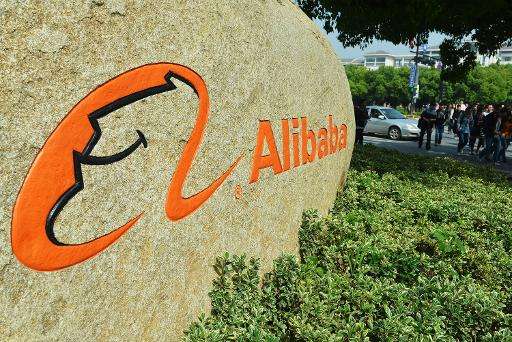Mobile growth spurs on Alibaba's revenue surge (Update)

The cash register keeps ringing for Alibaba, and mobile growth is a key reason why.
The Chinese e-commerce reported revenue growth jumped 45 percent in its fiscal fourth quarter—driven by more active buyers and shoppers on mobile devices as the Chinese middle class snapped up goods on its platforms like Taobao and Tmall. The strong revenue reassured investors worried about the slowing Chinese economy, a hiring freeze and the sale of counterfeit goods on Alibaba's platforms. And it proved that slowing growth is nowhere in sight.
Mobile growth has been a key driver for Alibaba since many Chinese consumers bypassed laptops and desktops to get connected to the Internet by their phones for the first time, particularly in rural areas. During the most recent quarter, Alibaba said mobile active monthly users rose 77 percent to 289 million, while revenue from mobile devices more than quadrupled, making up 40 percent of total sales.
RBC Capital Markets analyst Mark Mahaney said mobile growth was the "key March quarter story," with mobile gross merchandise volume—the total amount of goods sold—and revenue both coming in better than expected.
"March quarter results helped confirm the strength in Alibaba's core business and its ability to succeed through the material mobile transition," he said.
Outgoing CEO Jonathan Lu said mobile growth has been a major push for Aliababa, particularly improving its Taobao app.
"Looking ahead, we believe that the continued trend towards mobile provides us with a unique advantage to deliver a better consumer experience, as well as more value to merchants," he said in a call with analysts. "Therefore, we believe the increasing use of our mobile e-commerce apps will continue to fuel significant future growth."
Alibaba went public on the New York Stock exchange to much fanfare in September as investors sought to tap into the rapidly growing Chinese middle-class consumer class. Its e-commerce platforms including Taobao and Tmall make up 80 percent of Chinese e-commerce.
But there had been growing concern that Alibaba's surging growth could slow. Some concern began in January, when a Chinese government agency accused Alibaba of lax oversight and allowing vendors to sell counterfeit goods on Taobao. But the dispute was settled within a few days, when the agency said its report had no legal force and Alibaba promised to tighten its oversight of vendors.
In addition, earlier this week the company said in an internal memo that it planned no new net growth in its employee base in the new fiscal year, causing some to speculate the news might signal a slowdown for Alibaba.
But in a call with investors, Chief Financial Officer Maggie Wei Wu pointed out that they had the same policy in 2012.
"At that time, we enacted the policy to encourage innovation and efficiency and our reasons this year are exactly the same," she said in a call with analysts.
Shares jumped 7.2 percent, or $5.78, to $85.78 in morning trading. The stock had been down 23 percent since the beginning of the year.
© 2015 The Associated Press. All rights reserved.


















